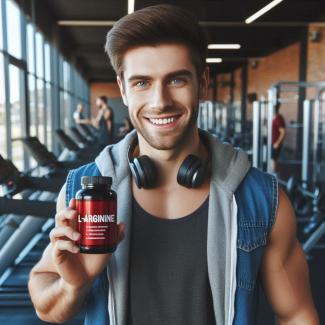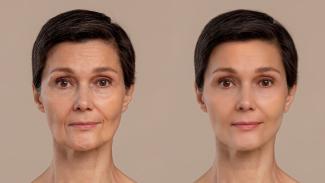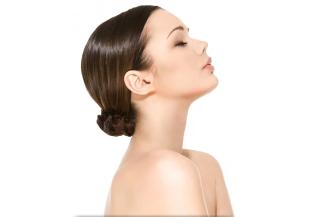
Facial yoga is a practice that involves a series of exercises designed to strengthen and tone the facial muscles, improve circulation, and promote overall skin health. The goal of facial yoga is to enhance the appearance of the skin, reduce signs of aging, and contribute to a youthful, radiant complexion through non-invasive methods. This guide provides an in-depth look at effective facial yoga exercises, their benefits, and best practices for achieving optimal results.
Benefits of Facial Yoga
- Improves Muscle Tone: Regular facial exercises help tone and strengthen the muscles of the face, which can reduce sagging and enhance facial contours.
- Boosts Circulation: Facial yoga increases blood flow to the skin, which promotes a healthy glow and supports cellular repair and regeneration.
- Reduces Wrinkles: By exercising the facial muscles, facial yoga can help reduce the appearance of fine lines and wrinkles, particularly around the eyes, mouth, and forehead.
- Enhances Lymphatic Drainage: Facial yoga stimulates lymphatic flow, which helps to reduce puffiness and improve skin texture.
- Promotes Relaxation: The practice of facial yoga can help alleviate facial tension and stress, leading to a more relaxed and youthful appearance.
Key Techniques in Facial Yoga
Before diving into specific exercises, it’s important to understand the basic techniques and principles of facial yoga:
- Gentle Pressure: Use gentle pressure when performing exercises to avoid straining the skin or underlying muscles.
- Breathing: Incorporate deep, mindful breathing to enhance relaxation and effectiveness of the exercises.
- Consistency: Regular practice is essential for seeing visible results. Aim for at least 15-20 minutes of facial yoga daily or several times a week.
- Hydration: Ensure your skin is adequately hydrated before and after exercises. Use facial oils or moisturizers as needed.
Detailed Exercises for Facial Yoga
1. Forehead Smoother
Objective:
To reduce forehead lines and smooth the skin on the forehead.
Instructions:
- Place your fingertips on your forehead.
- Gently smooth the skin from the center of the forehead outward towards the temples.
- Apply gentle pressure as you move your fingers in circular motions.
- Continue for 1-2 minutes.
Benefits:
- Reduces the appearance of horizontal lines.
- Promotes relaxation of the forehead muscles.
- Enhances blood circulation in the forehead area.
2. Eyebrow Lift
Objective:
To tone and lift the muscles around the eyebrows and reduce the appearance of sagging.
Instructions:
- Place your index fingers just above your eyebrows.
- Gently push downwards while trying to lift your eyebrows up.
- Hold the contraction for 5-10 seconds.
- Relax and repeat 10-15 times.
Benefits:
- Lifts and tones the eyebrow area.
- Reduces drooping of the upper eyelids.
- Stimulates the muscles around the eyes.
3. Cheek Lift
Objective:
To strengthen and lift the cheek muscles.
Instructions:
- Smile widely and press your fingertips onto your cheeks.
- Gently lift your cheeks while keeping your smile.
- Hold the position for 5-10 seconds.
- Relax and repeat 10-15 times.
Benefits:
- Enhances the appearance of fuller, lifted cheeks.
- Improves muscle tone in the cheek area.
- Reduces the appearance of sagging in the lower face.
4. Jawline Definer
Objective:
To sculpt and define the jawline.
Instructions:
- Tilt your head back slightly and look up at the ceiling.
- Push your lower jaw forward while keeping your lips closed.
- Hold the position for 5-10 seconds.
- Relax and repeat 10-15 times.
Benefits:
- Strengthens the muscles along the jawline.
- Helps reduce the appearance of a double chin.
- Improves the overall contour of the lower face.
5. Lip Plumper
Objective:
To plump and define the lips.
Instructions:
- Pout your lips and press them together firmly.
- Use your fingers to gently massage your lips in circular motions.
- Continue for 1-2 minutes.
Benefits:
- Enhances the fullness of the lips.
- Stimulates blood flow to the lip area.
- Reduces the appearance of fine lines around the mouth.
6. Neck Toner
Objective:
To tone and firm the neck muscles.
Instructions:
- Sit or stand with a straight back.
- Tilt your head back and look up towards the ceiling.
- Press your tongue against the roof of your mouth and hold the position.
- Relax and repeat 10-15 times.
Benefits:
- Strengthens the muscles in the neck area.
- Reduces the appearance of neck lines.
- Improves overall skin tightness in the neck.
7. Eye Toning
Objective:
To reduce puffiness and dark circles around the eyes.
Instructions:
- Place your ring fingers gently on the area around your eyes.
- Use a light tapping motion to stimulate the skin.
- Continue for 1-2 minutes, focusing on the areas with puffiness.
Benefits:
- Reduces puffiness and dark circles.
- Enhances blood circulation around the eyes.
- Improves the overall appearance of the under-eye area.
8. Chin Lift
Objective:
To firm and tone the chin and jaw area.
Instructions:
- Tilt your head back and look up towards the ceiling.
- Push your chin forward and slightly upward.
- Hold the position for 5-10 seconds.
- Relax and repeat 10-15 times.
Benefits:
- Firms the chin and jawline.
- Reduces the appearance of a double chin.
- Improves overall contour of the lower face.
9. Full Face Relaxation
Objective:
To relax and release tension from the entire face.
Instructions:
- Sit comfortably with your eyes closed.
- Place your hands on your forehead and gently press and release.
- Move your hands down to your cheeks and repeat the pressing and releasing motion.
- Continue down to your jawline, finishing with a gentle massage of the neck.
Benefits:
- Relieves tension and stress in the facial muscles.
- Promotes relaxation and overall well-being.
- Enhances the appearance of relaxed, smooth skin.
Additional Tips for Facial Yoga
- Warm-Up: Before starting your facial yoga routine, consider doing a few gentle warm-up exercises for the face to prepare the muscles.
- Use Clean Hands: Ensure your hands are clean before touching your face to avoid transferring bacteria.
- Stay Hydrated: Drink plenty of water to keep your skin hydrated and support overall skin health.
- Avoid Overexertion: Do not overexert your facial muscles. Perform exercises gently and within a comfortable range.
- Complementary Practices: Combine facial yoga with other skin care practices, such as exfoliation and moisturizing, for optimal results.
- Listen to Your Body: Pay attention to how your skin and muscles respond to the exercises. Adjust intensity and duration as needed.
Facial yoga is a powerful practice that can enhance your appearance, improve muscle tone, and promote a youthful glow. By incorporating these exercises into your routine and following best practices, you can achieve significant benefits for your skin and overall facial aesthetics. Regular practice, along with proper hydration and skin care, will help you maintain a vibrant, youthful complexion.
What should you pay attention to in facial yoga and what should you follow for the best results?
To achieve the best results from facial yoga, it’s important to pay attention to several key factors and follow specific guidelines. These considerations help ensure that you perform the exercises correctly and effectively, leading to the desired benefits for your facial muscles and overall appearance.
Key Considerations for Effective Facial Yoga
1. Proper Technique
- Gentle Movements: Use gentle and deliberate movements to avoid straining or stretching the skin excessively. Avoid any sudden or jerky motions.
- Correct Pressure: Apply the right amount of pressure when performing exercises. Too much pressure can cause damage or irritation, while too little may not yield noticeable results.
- Mindful Execution: Focus on performing each exercise with precision, ensuring that the targeted facial muscles are engaged.
2. Consistency
- Regular Practice: For optimal results, practice facial yoga regularly. Aim to perform the exercises 3-4 times a week, if not daily. Consistency is key to seeing improvements in muscle tone and skin appearance.
- Routine Integration: Incorporate facial yoga into your daily skincare routine to maintain results and promote long-term benefits.
3. Skin Preparation
- Clean Skin: Ensure that your face is clean and free of makeup before starting your facial yoga exercises. This helps prevent the transfer of dirt and bacteria and allows for better engagement of the facial muscles.
- Hydration: Apply a moisturizer or facial oil to keep your skin hydrated and provide a smooth surface for performing exercises. This helps reduce friction and enhances the effectiveness of the exercises.
4. Facial Relaxation
- Stress Reduction: Facial yoga should be done in a relaxed state. Reduce stress and tension in the face by practicing deep breathing or calming techniques before starting.
- Comfortable Position: Perform exercises in a comfortable seated or standing position with a straight back. Ensure that your neck and shoulders are relaxed to avoid unnecessary strain.
5. Proper Breathing
- Deep Breathing: Incorporate deep, controlled breathing during the exercises. This helps to relax your facial muscles and improves overall effectiveness.
- Inhalation and Exhalation: Coordinate your breath with the movements of each exercise. For example, inhale while preparing for the exercise and exhale during the exertion phase.
6. Listening to Your Body
- Avoid Pain: Pay attention to how your skin and muscles feel during and after exercises. If you experience pain or discomfort, stop the exercise and assess your technique.
- Adjust Intensity: Modify the intensity and duration of exercises based on your comfort level and individual needs. Avoid overexertion to prevent muscle strain or skin irritation.
7. Balanced Approach
- Varied Exercises: Incorporate a variety of facial yoga exercises to target different muscle groups and achieve a balanced effect. Focus on areas such as the forehead, eyes, cheeks, jawline, and neck.
- Complementary Practices: Combine facial yoga with other skincare practices, such as exfoliation, moisturizing, and sun protection, for comprehensive facial care.
8. Hydration and Nutrition
- Stay Hydrated: Drink plenty of water throughout the day to keep your skin hydrated and support overall health.
- Healthy Diet: Maintain a balanced diet rich in vitamins and minerals that support skin health. Nutrients such as vitamins C and E, as well as omega-3 fatty acids, can benefit skin appearance and elasticity.
9. Patience and Realistic Expectations
- Gradual Results: Understand that visible results may take time. Facial yoga is a gradual process, and improvements in muscle tone and skin appearance will develop over weeks or months.
- Realistic Goals: Set realistic goals and expectations for your facial yoga practice. While it can significantly enhance your appearance, it should be viewed as part of a broader skincare and wellness routine.
Common Mistakes to Avoid
- Overexertion: Avoid excessive force or prolonged duration of exercises, as this can lead to muscle strain or skin damage.
- Skipping Steps: Don’t skip the preparatory steps, such as cleansing and moisturizing, as they are crucial for effective exercise and skin health.
- Inconsistent Practice: Irregular practice may lead to slower or less noticeable results. Strive for consistency to maximize benefits.
Facial yoga is a beneficial practice for enhancing facial muscle tone, reducing signs of aging, and promoting overall skin health. By paying attention to technique, consistency, skin preparation, relaxation, and listening to your body, you can achieve the best results from your facial yoga routine. Integrate these practices into your skincare regimen for a holistic approach to maintaining a youthful and radiant complexion.
By adhering to these guidelines, you can ensure that your facial yoga practice is both effective and safe, contributing to a healthier and more vibrant appearance.






